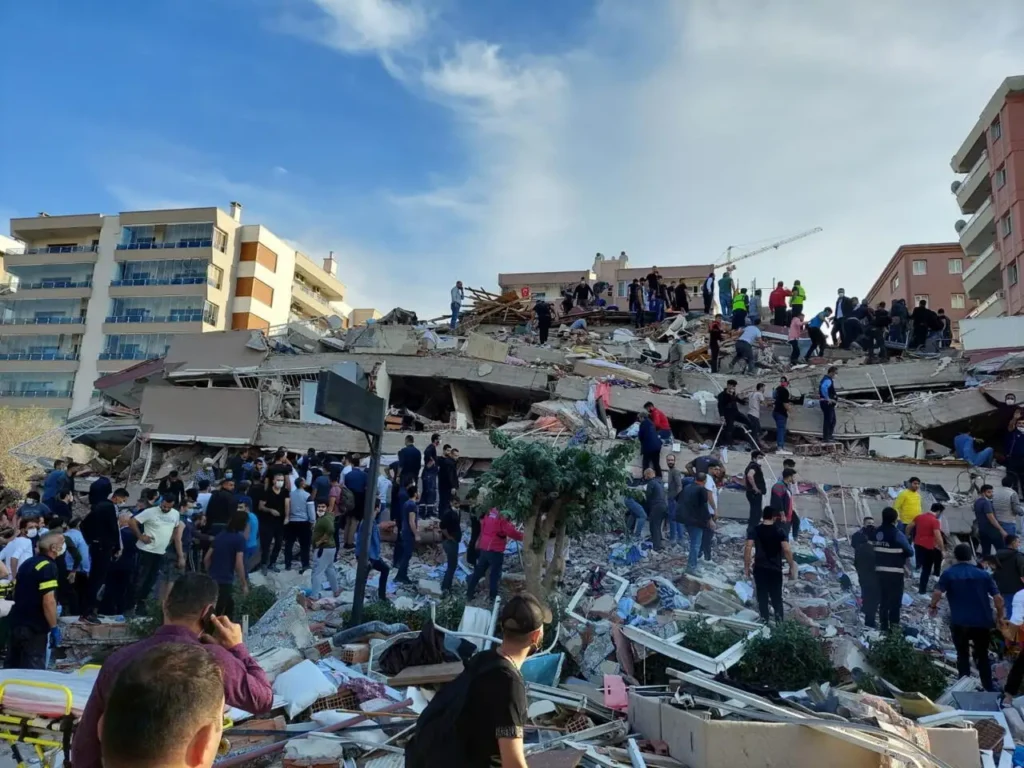6.1-Magnitude Earthquake Jolts Greece; Kasos on Tsunami AlertTremors shake Turkey, Egypt, and Libya; no injuries reported
A powerful 6.1-magnitude earthquake struck off the coast of Greece near Kasos island early Tuesday, causing widespread tremors across the Eastern Mediterranean. Authorities responded swiftly with a tsunami alert, while neighboring countries including Turkey, Egypt, and Libya also reported strong shaking.

Epicenter Located Near Kasos
The quake originated in the Mediterranean Sea, roughly 24 kilometers south of Kasos, part of the Dodecanese island chain. The European-Mediterranean Seismological Centre (EMSC) confirmed that the quake hit at a shallow depth of 15 kilometers. Shallow quakes often lead to stronger surface effects, which made the tremors widely felt.
Greece’s National Observatory in Athens issued a tsunami warning shortly after the tremor. Officials urged residents in coastal areas to avoid beaches and low-lying zones. Emergency services prepared evacuation plans in case of rising sea levels, but no tsunami followed the quake.
Tremors Rattle Neighboring Countries
People in southwestern Turkey felt the quake clearly. In cities like Muğla and Antalya, residents rushed out of buildings in fear of aftershocks. Some schools paused classes temporarily until safety checks could be completed.
Egypt also reported tremors, especially in Alexandria and Cairo. The National Research Institute of Astronomy and Geophysics confirmed the quake’s impact but found no injuries or damage. “Citizens felt the shaking, but it didn’t cause harm,” said a spokesperson.
Eastern Libya, including cities like Derna and Benghazi, experienced similar tremors. Though the shaking surprised many, local officials confirmed that no one suffered injuries and no buildings sustained damage.
Panic and Precautions in Greece
In Kasos and nearby Karpathos, residents described the quake as alarming. “It felt like the floor moved under us,” said Eleni Markou, a local resident. “Everyone ran outside.” Many stayed in open areas while waiting for safety updates.
Greek emergency teams inspected roads, schools, and government buildings within hours of the quake. Engineers found no major structural damage, but authorities temporarily closed schools and asked people to avoid older buildings until further inspection.
Tourists staying along the coast received alerts on their phones advising them to move to higher ground until officials ruled out a tsunami threat.
Greece Responds Quickly
The Greek Civil Protection Authority launched its emergency response immediately. Teams deployed by land, sea, and air to assess safety and provide assistance. Coast guard vessels patrolled the shoreline, and helicopters surveyed remote areas to check for landslides or other hidden damage.
Government officials worked closely with local leaders to coordinate communication and share safety instructions. By the afternoon, they lifted some precautions after confirming stable sea levels and structural safety in public buildings.
Why This Region Sees Frequent Quakes
Seismologists point to the tectonic boundary between the African and Eurasian plates as the source of frequent earthquakes in the area. Dr. Nikos Kalogeropoulos, a geophysicist at the University of Athens, explained that the region sits on a complex fault system.
“This level of seismic activity is typical for the Eastern Mediterranean,” he said. “Shallow quakes like this one can spread tremors over great distances.”
Dr. Kalogeropoulos warned that aftershocks could follow and advised people not to enter damaged or unstable buildings.
No Casualties, But Preparedness Under Scrutiny
Although no one was injured, the event reminded residents and officials across the region of the need for earthquake readiness. Some coastal towns lack modern infrastructure, and outdated buildings might not withstand stronger tremors.
Local leaders in Greece and nearby countries have called for renewed focus on emergency drills, public education, and updated construction regulations to improve resilience in future quakes.
International Support and Regional Reactions
Neighboring countries responded with caution and cooperation. Turkey and Egypt issued safety reminders through local media and government alerts. Social media users across the region shared safety tips and updates from official sources.
The European Union offered assistance, including access to real-time satellite data and funding for any recovery needs. Regional disaster response organizations began coordinating information sharing in case the situation escalated.
What Happens Next?
Authorities continue to monitor the region for aftershocks and changes in sea levels. Seismologists expect smaller tremors in the coming days but do not anticipate another major quake. Engineers will keep inspecting infrastructure in affected areas, especially bridges and coastal buildings.
Emergency teams remain active in Kasos, Karpathos, and Crete to support residents and tourists. Officials have also set up temporary shelters for people who prefer to stay outside until aftershock risk decreases.
As the initial fear settles, the quake has prompted serious conversations about seismic safety. With so many countries impacted, the region may soon revisit its strategies for disaster management, early warning systems, and cross-border cooperation.






